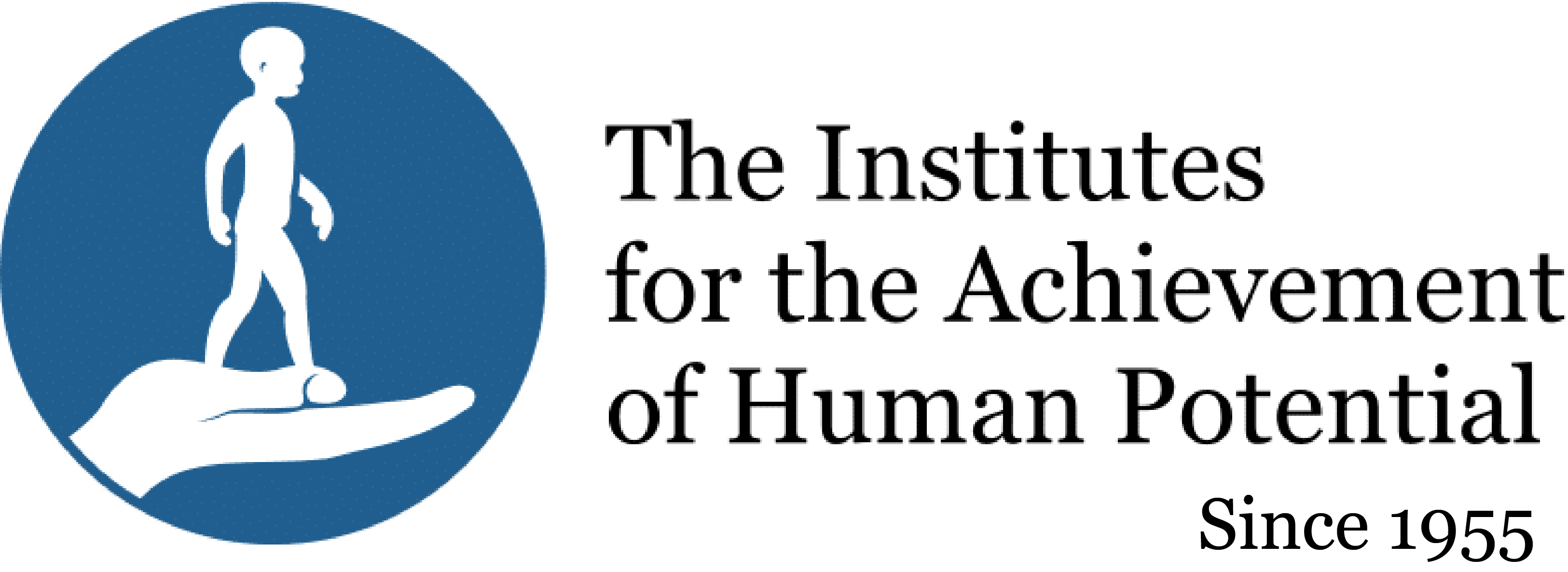Everything You Ever Wanted to Know About Your Child’s Traumatic Brain Injury (TBI) 11/20/2014
By Mihai Dimancescu, M.D.
Glossary of Terms
Traumatic Brain Injury
Any injury to the brain sustained after birth. Such injuries include blows to the head, lack of oxygen from suffocation, smoke inhalation or near drowning, hemorrhages, brain tumors, infections and penetrating wounds.
Cerebral Concussion
A person who receives a blow to the head that is sufficiently firm to cause brief loss of consciousness (minutes, not hours) and/or amnesia (loss of memory for the event). These types of injuries do not show up as an abnormality on any testing. Recovery is usually complete without any special treatment, but occasionally ability to concentrate and short-term memory may be affected for several months afterwards.
Cerebral Contusion
When a blow to the head is strong enough to cause temporary loss of consciousness (minutes to hours) and amnesia with tests showing bruises in the brain, the injury is called cerebral contusion. The bruises are called hemorrhagic contusions and may be large or small, single or multiple. Their size, number and location determine whether there will be any associated speech difficulties, reading or writing problems, or any weakness of the arms or legs. Recovery may be spontaneous and complete, or may require many months or years of treatment.
Cerebral Edema
Focal (localized) or diffuse edema (swelling) of the brain that frequently accompanies traumatic brain injuries. Edema with cerebral contusions, hemorrhages, or brain tumors is often focal (localized to one area of the brain) or may be diffuse. With infections or lack of oxygen, the edema is generally diffuse. Diffuse edema usually signals a prolonged recovery frequently requiring long-term treatment. Cerebral edema following a TBI usually lasts from 3-10 days.
Cerebral Hemorrhages
Hemorrhages of TBI may be outside or inside the brain. Inside the skull the brain is surrounded by a protective triple-layered covering known as the meninges. These consist of a thick outer layer called the dura, a very fine middle layer called the arachnoid, and a third fine layer adherent to the surface of the brain called the pia. Within the brain are four narrow, fluid-filled cavities called ventricles; they produce cerebrospinal fluid, a clear colorless fluid that constantly bathes the brain.
Cerebral hemorrhages are named according to their anatomical location:
-
Epidural hemorrhage: Between the skull and the outer (dura) covering.
-
Subdural hemorrhage: Between the outer (dura) and middle (arachnoid) coverings.
-
Subarachnoid hemorrhage: Between the middle (arachnoid) and inner (pia) coverings.
-
Intracerebral hemorrhage: Within the parenchyma or meat of the brain. (Different anatomical sites may be given, i.e. frontal, temporal, etc.).
-
Intraventricular hemorrhage: Within the fluid-filled cavities of the brain.
Hemorrhages may have a single anatomical location, or in very severe TBI’s, may have several anatomical locations. Hemorrhages injure the brain by compression of brain cells and pathways, or by mechanical disruption and tearing of the cells and pathways.
Skull Fractures
Skull fractures may be linear, undisplaced (like a crack in a dinner plate), stellate with multiple linear fracture lines diverging from a central point, depressed with a fragment of bone indenting or cutting into the brain, diastatic with a wide separation of the fracture margins, suggesting a massive underlying hemorrhage or severe diffuse swelling of the brain, egg shell with multiple fractures in different parts of the skull. A compound fracture of the skull is one in which there is an open wound of the skin over the fracture. A skull fracture is not always accompanied by brain injury, but the more severe the fracture, the greater the likelihood of brain injury. Conversely, a blow to the head may injure the brain without fracturing the skull.
Penetrating Wounds of the Brain
Penetrating wounds are those that involve an object penetrating the skin, the bone, the brain coverings, and the brain. These include but are not limited to gunshot wounds, knife wounds, axe wounds, ice pick wounds, harpoon wounds, metallic fragment wounds, hard wood wounds, nails, masonry and others. Depending on the site of the penetration, the size of the object, and the degree of the brain injury, recovery may be complete and rapid or partial and slow.
Anoxic or Hypoxic Brain Injuries
Whenever an insufficient amount of oxygen reaches the brain, the term anoxia or hypoxia is applied. Anoxia is a total absence of oxygen. The brain cannot survive more than two minutes without oxygen. Hypoxia is an insufficient amount of oxygen. These types of injury to the brain usually occur after a near drowning, a suffocation, smoke inhalation, or a crush injury to the chest.
In older individuals, hypoxia or anoxia accompanies a stroke, a heart attack, or a pulmonary arrest (cessation of breathing). Hypoxic or anoxic brain injuries frequently have an initial episode of diffuse brain swelling (edema). The duration and the degree of oxygen deprivation dictates the subsequent degree of injury to the brain, but the exact duration and degree are often unknown so the extent of injury may not be recognized until days, weeks or months following the event.
Brain Tumors
Growths or tumors in the brain may be single or multiple. They may invade or compress brain cells. Depending on their location in the brain and their behavior (slow-growing or fast-growing), they will cause minimal or major injury to the brain.
Infections
Infections of the brain may be caused by bacteria or by viruses. A bacterial infection may be localized, forming an abscess, or diffuse, causing a cerebritis or encephalitis. Viral infections tend to be diffuse, causing a viral encephalitis. If the covering of the brain are infected, the term meningitis is used. When an infection involves the ventricles, a ventriculitis is diagnosed. These infections may occur in association, such as in a meningoencephalitis. The severity of the injury to the brain depends on the “virulence” of the bacteria or virus and the degree of inflammation and swelling that it provokes in the brain.
Levels of Consciousness
Several terms are used in a neurological or neurosurgical setting to define levels of consciousness:
-
Alert: Eyes open, able to follow some direction, signs of awareness of surroundings.
-
Lethargic: Sleepy, but arousable. Cooperates when aroused. Aware of surroundings when aroused.
-
Obtunded: Difficult to arouse. Shows some signs of awareness when aroused, but drifts back to sleep in mid-sentence or mid-activity, requiring frequent stimulation to re-arouse.
-
Stuporous: Can only be aroused to point of eye-opening, and only very briefly.
-
Coma: Unarousable or as yet unaroused.
-
Brain death: Complete cessation of all brain activity.
EXAMINATIONS AND TESTS
Clinical examinations attempt to evaluate an individual’s function. Tests consist of different studies designed to give a black-and-white objective image, graph, or numerical value to a finding.
Glasgow Coma Score (GCS)
The simplest bedside clinical exam performed in Traumatic Brain Injury is the GCS, evaluating eye opening ability, vocal or verbal ability, and best movement ability. The score ranges from a low of 3 (no detectable function) to a high of 15 (fully alert). A score of 8 or less indicates coma. A single score has no predictive or prognostic value, but a series of scores over hours, days, and weeks indicate a trend.
Neurological Exam
The standard neurological exam requires an assessment of mental status (level of consciousness; orientation to time, person, and place; understanding of instructions; ability to read and understand reading), function of the twelve cranial nerves (that innervate the eyes, face, hearing, mouth, and throat), mobility (of the extremities and of the body), muscle tone, abnormal movements, reflexes, sensory functions, balance, and coordination. This exam may be quite time consuming when done completely in an alert individual, or may be very brief in a poorly responsive person.
The Institutes Developmental Profile
The Developmental Profile assesses seven levels in each of three sensory functions and three motor functions. The Profile provides a 42-box grid that supplies in a simple and reproducible way an extremely comprehensive view of brain function, regardless of the degree of the person’s responsiveness, and quickly localizes the level of function as brain stem, midbrain or cortical, unilateral or bilateral.
Vital Signs
Blood pressure, heart rate, respiratory pattern and temperature in the first days following a TBI give an indication of intracranial pressure and status of infection. Increasing blood pressure with decreasing heart rate and changes in respiratory pattern suggest increasing intracranial pressure from a space-occupying lesion such as a hemorrhage or a tumor, or from edema (swelling) of the brain.
Intracranial Pressure Monitor
If increasing intracranial pressure is suspected, an intracranial pressure monitor is inserted through a tiny opening in the skull to provide information about intracranial pressure before changes in vital signs or in clinical exam appear, allowing for more rapid and more effective treatment.
Spinal Tap
Also known as lumbar puncture, this test involves inserting a fine needle into a sac of fluid at the base of the spine. The fluid in the sac is the same fluid that bathes the brain and the spinal cord. The test is done if an infection is suspected, or if a hemorrhage that has not declared itself on any other test is being entertained.
Skull X-ray
This is the best test to demonstrate skull fractures.
CAT Scan
CAT or CT scan is a computer-generated radiological image of axial slices through the brain. This is the best test to demonstrate hemorrhages, penetrating injuries, swelling, and size of the ventricles of the brain. The test may also show contusions of the brain and brain tumors.
MRI Scan
Magnetic Resonance Imaging is a type of scan generated by a powerful magnet and provides images of the brain in slices through three different planes (axial, sagittal, coronal). An MRI scan is more sensitive than the CT scan for subtle findings or for brain tumors.
EEG
The ElectroEncephaloGram is a recording of the electrical activity of the brain, just as an electrocardiogram records the electrical activity of the heart. A major difference between the two is that the EEG must record microvolts through the thickness of the skull, which, in places, may reach one-half inch. The test is useful to follow the evolution of seizures or the course of an infection and to determine brain death.
Evoked Potentials
Three types of evoked potential tests may be performed: Visual Evoked Potential (VER), Brain stem Auditory Evoked Potentials (BAER), and Somato Sensory Evoked Potentials (SSEP). Each of these tests uses computerized EEG analysis of brain recordings of different sensory stimuli (visual, auditory, or peripheral sensory) to provide information about the integrity of the respective pathways.
It is important to remember that a test only gives information about a condition that it is measuring at that give moment in time. The test has no prognostic value. In other words, the tests are not predicting the future.
Mihai Dimancescu, M.D.,(Consulting Neurosurgeon)

Mihai Dimancescu was born in England to Romanian parents. His family lived in Marrakesh, Morocco, for eight years and moved to the United States in 1956. Following graduation from Yale University, he attended Trinity College, Harvard, for a year before studying medicine at the University of Toulouse.
Following his surgical residency and his neurosurgical residency, Dr. Dimancescu established his practice in neurosurgery in New York.
As founder of the International Coma Recovery Institute, Dr. Dimancescu carried the work of The Institutes into the hospital setting and into neuro-rehabilitation facilities worldwide. He has been president of the New York State Neurological Society and chairman of the board of the Coma Recovery Association.
At present, Dr. Dimancescu is chairman of the board of The Institutes for the Achievement of Human Potential and president of The International Academy for Child Brain Development. He is retired from surgery and is a neurosurgical consultant now.

 Donate
Donate








